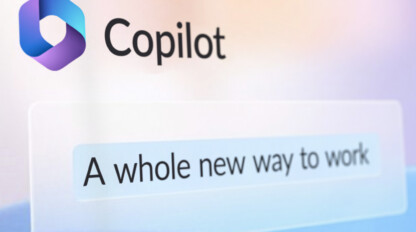13 Hiring Process Steps to Find the Perfect Candidate in 2023

In today’s world of recruitment, things move at a fast pace. One of the most difficult parts of the hiring process, for both candidates and employers, is misalignment around speed and efficiency of the interview process. What are the important things to consider when structuring a hiring process, and how can you implement those factors into each phase of the hiring process?
What is a Hiring Process?
Establishing a set procedure for the journey from job posting to job offer is crucial. Having a set plan ensures that each candidate receives fair, thorough consideration. It also ensures that, despite even the most urgent timelines to fill a role, no key factors are missed, either by the hiring manager or the candidate. Three key components to consider during the hiring process are efficiency, transparency and goal alignment.
Efficiency is key. Some companies like to introduce candidates to every single person on the team or insist on keeping them in interviews for hours on end. This approach often rubs candidates the wrong way and will lead them to take their talents elsewhere. Keeping your key stakeholders involved early and often is crucial to expediting the interview process and reaching a decision more efficiently. This will allow you to potentially beat others to the market while ensuring that the candidate understands they’re highly valued by the team.
Transparent communication and timing can’t be overstated. Maintain open and honest communication with the length of the candidacy process, the expected start time for the role and what will be expected of candidates to receive an offer. Hiring process for different roles may look slightly different. If the candidate will be required to produce a sample piece of work or complete an assessment of their skills, it’s important that they’re prepared to devote the necessary time to those steps. Being up front with these kinds of factors will prevent a lot of frustration from both ends.
It’s also important to remember that both parties have the same goal in mind. Both the company and the candidate want to find their right fit. Having an efficient process that allows your key people to meet the candidates will leave you better positioned to not miss out on candidates by “dragging your feet.” If you’re interested in them, you can guarantee someone else is too.
Once these key considerations are brought to the forefront of the hiring process, it’s time to structure the process step by step.
13 Hiring Process Steps to Find the Perfect Candidate
1. Decide if there’s a need to fill the role.
Before launching your search of the perfect candidate, first assess your organization’s current priorities to determine whether this role is integral to the team’s success. Your leadership team doesn’t want to spend budget on a role that will ultimately have little value, and candidates don’t want to be set up for failure by accepting a role where they don’t have the opportunity to contribute to the team’s mission. Break down the existing gaps in the team, identify the necessary skills to fill them and shape a role around those factors.
2. Come up with a plan.
Determine the steps necessary to fill this role. It’s important to have an end goal in mind, whether that’s getting the job filled in a certain region, by a certain time or in a certain manner. Establishing steps to reach this end goal and following a set plan will help to ensure long-term success for the candidate and the company.
3. Write a job description
Before writing the job description, sit down with the team that the candidate would be joining and other teams they’d be working closely with. Discuss the role with these internal stakeholders to understand the day-to-day duties, responsibilities and skillsets required to be successful in this job. Try to use some of their exact language to be sure you’re capturing any industry or role-specific jargon.
4. Advertise the job, reach out to recruiters, obtain referrals, etc.
Spread the word, and never underestimate the power of your existing employees to help attract new ones. A large number of roles at ivision are filled through referrals because our employees are our greatest advocates and credible resource. Their career journeys have introduced them to bright, talented individuals throughout the industry, and we’re eager to meet them. It’s also worth mentioning that retention is highly dependent on employees working with people they mesh well with.
5. Review the candidate’s application.
Search for main indicators of success within the candidate’s application. This is a great place to pull further insight from outside of their resume and cover letter.
In this section, it’s important to note that the application should be created in an efficient manner. Many candidates will close out of applications before completing them if they feel too long or ask unnecessary questions. A candidate’s time is valuable, as is yours, so create an application that effectively answers the questions you need insight on without making them duplicate information they’ve already shared in their resume or cover letter. An application should be an introduction that will be expanded upon in the interview, so leave some room for further questions.
6. Screen the candidate’s resume.
In addition to the application that directly aligns with the job description, see what kind of qualities and skills they have from other roles. Learn more about who they were before they stumbled upon your job posting and try to understand how previous experiences could translate well into your company culture. This is also a good time to determine if the candidate aligns with your organization’s DEI initiatives and goals.
7. Complete a screening call.
First impressions are everything – for both your company and the candidate. Schedule a short call with the candidate to chat openly about the position. This is a great way to learn a little more about them and whether they’d be a good fit before scheduling a formal interview. This method is also a great way to narrow down a list of candidates from the greater application pool.
8. Complete an interview with the candidate.
Whether it’s in-person or virtual, the interview is the main event in the hiring process. This is their first opportunity to meet their potential coworkers and get a glimpse into what their day-to-day would look like. This is the perfect opportunity for their manager and peers to ask for clarification on anything mentioned in their application, resume or cover letter, and it also gives them an idea of the person’s personality outside of their skillsets. Make sure you leave time for the candidate to ask any questions that have been on their mind, as they’re also interviewing you in a way.
9. Assessment of the candidate.
Once you get to a point in the hiring process where you have a good idea of a few key candidates, ask them to complete an assessment that aligns with the skills necessary for the role. Whether this is an online or written test, practical skills application test or culture-based assessment, be sure to give the candidate plenty of time and notice. Be considerate of their time while also ensuring you get all the information you need from them.
10. Complete a background check and check references.
Dot your I’s and cross your T’s. You’ve spent a considerable amount of time getting to know the candidate, but inevitably, there are some things that don’t come up initially in the hiring process. Do your due diligence to learn more about the candidate outside of what they directly shared with you.
11. Make your final decision.
Assess the candidate’s qualities against the job description and other candidates you may have evaluated along the way. Given everything that you’ve learned through their candidacy, get with the proper stakeholders and make the final call.
12. Extend the job offer.
Now for the fun part – sharing the good news! Disclose the final details of the role, including offered salary, benefits and onboarding details. If there is any equipment or technology they need to pick up or get delivered prior to their start date, coordinate a way to get those items to them.
13. Begin onboarding.
Onboarding is more than just placing them in orientation, introducing them to their manager and saying, “have a great first day!” Onboarding is an ongoing process to make sure the candidate and their team feel supported as they navigate working together. Work with your HR team to ensure they have all the resources, contact information and access they need to be successful as they begin their role. Schedule regular checkpoints throughout their first few months to make sure they’re seeing a long-term career path with the company and help guide them through ways to achieve that.
At ivision, we’re committed to making the hiring process a positive experience from candidates, and we’re hiring! Check out our current open positions and reach out if any pique your interest.



